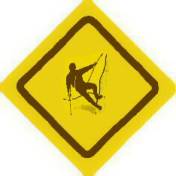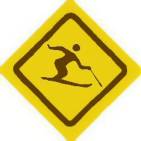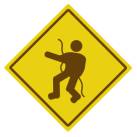
 |
Altitude Illness
How to avoid altitude related illness when traveling to high elevations
Altitude Considerations
If considering a trip to areas of altitude elevation above 2,400m (8,000f), you should be familiar with the symptoms of Acute Mountain Sickness (AMS), High Altitude Pulmonary Edema (HAPE) and High Altitude Cerebral Edema (HACE).
The body's response to lowered oxygen involves hyperventilation and changes in blood chemistry, which lead to acclimation to the new environment. When acclimation does not occur properly altitude illnesses occur.
Altitude illnesses are a collection of symptoms: the speed of ascent, the elevation, and medical problems, malnutrition, dehydration, and fatigue all of which will make altitude problems worse. AMS symptoms include headache, nausea, vomiting, disturbed sleep and swollen ankles. Usually symptoms subside after a day or two and only rarely progress to serious problems.
HAPE symptoms include shortness of breath even at rest, an irritable cough that produces a pink frothy sputum (phlegm), and a staggering drunk walk may occur. Early warning symptoms include anxiety, restlessness, increased pulse, quick shallow breathing and a slight fever.
One very important factor is that most people will deny symptoms. Many had been carefully warned of altitude symptoms but after paying for an expensive holiday many are unwilling to abandon their holidays. Therefore it is easy to rationalize their discomforts.
Careful Ascension will acclimate people and make illness less common. Ascending with a buddy can also help make a big difference.
There may be a point of no return where judgment is so badly impaired that the entire group may have lost the ability to be subjective and will continue ignoring symptoms. It is very important to have a plan and to follow through with that plan agreed upon before beginning ascension.
Diamox is used to help acclimate. The minimal dose is 125mg in the morning and evening of the ascent and for two further days is usually enough. Larger doses of 250mg twice per day may be used if AMS symptoms occur. At larger doses adverse symptoms like numbness of fingers, toes and mouth, as well as increased urination may occur.
Other medications such as dexamethasome and nifedipine are less commonly used and are not the preferred drug of prevention.
People with AMS and HAPE improve with rest and stopping ascension. All people will improve with descent of a few thousand feet.
Because of high mortality with HAPE and HACE immediate descent is important. Diamox starting with one 125mg tablet immediately followed by another in four hours, dexamethasome, supplemental oxygen may help but the first three things to do are to descend, descend, and descend. Canadian guidelines do not recommend preventative medication for altitude by they can be included in a first aid kit. People with only AMS may proceed after rest but HACE and HAPE or suspected cases should be fully examined by someone experienced with altitude.
Mountaineers also learn to climb high but sleep low, they do not increase the elevation of where they slept before by more than 300m (1000ft), and every 3 rd night stay at the same altitude. Altitude may have other effects on the body.
Blood may become more prone to clot because of dehydrations and other effects of altitude.
Some authorities recommend a daily baby Aspirin for those staying at higher elevations for prolonged time.Plan for Diagnosing Altitude Illness
• Are signs and symptoms compatible with altitude illness? If no, treat likely cause. Evacuation may be part of plan. If yes go to #2.
• Is there headache? If yes, try rest, no further ascension, snack, drink fluids and take mild pain medication. If better and no symptoms then continue with activity. If not better or better but still have symptoms, evaluate further. Check for ataxia (loss of balance) by having the person walk toe-heel in a tandem-walking test. If ataxic poor balance descend immediately. Give dexamethasome, oxygen, and gamco bag. If normal, restat altitude and re-test in 6-12 hours. Test for altered mental status-have person do serial 7's (100, 93, 86, 79, 72, etc.) or check short-term memory. If altered mental status check for dehydration and hypothermia. If normal mentation re-test for ataxia and mental status in 12 hours. • Is person short of breath? If yes-let rest 15 minutes, if no recovery treat as per HAPE with limited further exertion, give oxygen. If descent not feasible give oxygen, hyperbaric bag, or consider nifedipine if person recovers from shortness of breath in 15 minutes and no symptoms continue with activity.
• Does the person have a good appetite? If yes -probably not altitude illness but re-evaluate in 5-10 minutes. If no , but low urine out put and no other symptoms except mild headache, rest at previous night camp and altitude and re-evaluate in 12 hours. If no, and good urine output, continue with activity but reassess in 12 hours. • Severe blurry or decreased vision? YES-oxygen, hyperbaric bag and descend. No-Check following: • Did person faint? A - If non-responsive treat for HACE-dexamethasone injection, first aid, and descend. B - Check for other health problems. If no good reasons, give oxygen, and descend.
• Is there swelling of hands, feet or face which should improve without treatment? If no other symptoms reassess 12-24 hours. If no, serious altitude illness is unlikely.
• Is person having difficulty sleeping? If yes or unsure give acetazolarmide 12mg at hs x 3 days. Do not give sleeping pills.
• Is person anxious, disoriented, irritable, or more emotional? Reassess mental status.
• Has person had other altitude illnesses? What altitude, what symptoms, what was done? Any other medical problems? Is the person on mood altering drugs? If yes stop, prepare for withdrawal and consider descent.
Symptoms of Altitude Illness to look for in yourself • A high resting pulse greater than 110/minute. Check it early in the morning while resting. This can be blunted by some medication. • Shortness of breath at rest (breathing 20/minute) • Loss of Appetite• Great Fatigue
Skylark Medical Clinic 264 Tache Avenue Winnipeg, MB R2H 1Z9 Ph: 453-9107 Fax: 453-9115
|
 |


